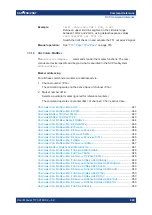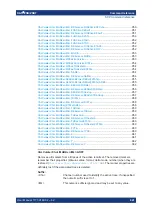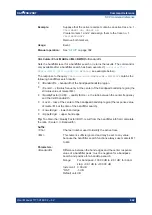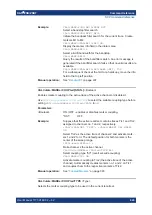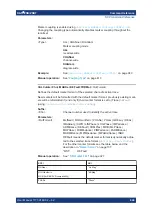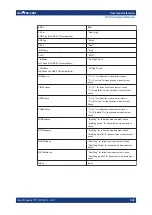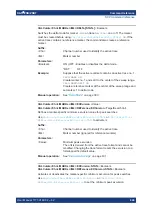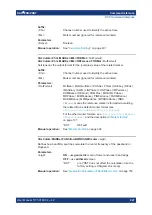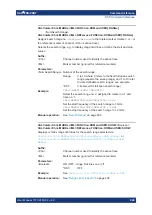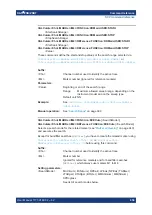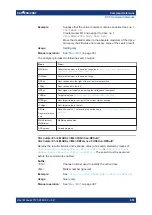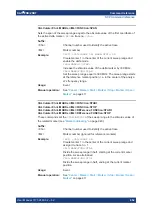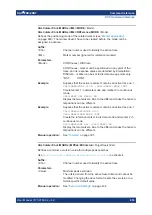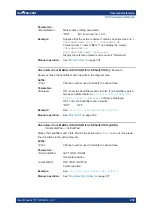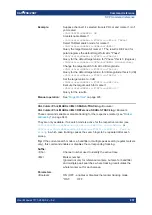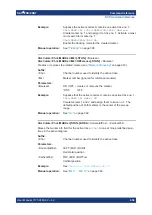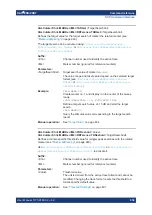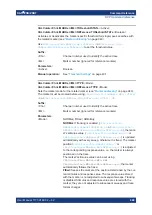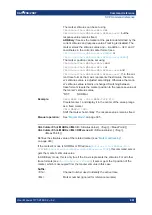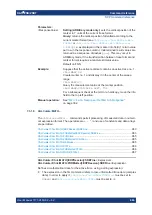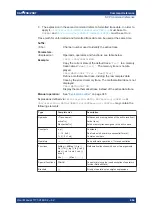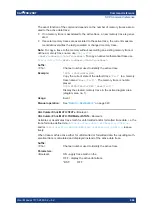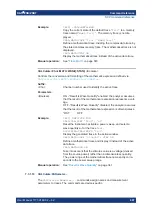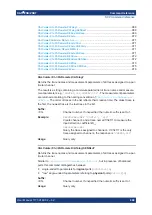
Command reference
R&S
®
ZNB/ZNBT
953
User Manual 1173.9163.02 ─ 62
CALCulate<Chn>:MARKer<Mk>:MODE
<Mode>
CALCulate<Chn>:MARKer<Mk>:REFerence:MODE
<Mode>
Defines the positioning mode of the related marker (see
on page 940). The marker doesn't have to be created before, the mode can be
assigned in advance.
Suffix:
<Chn>
.
Channel number used to identify the active trace
<Mk>
Marker number (ignored for reference markers)
Parameters:
<Mode>
CONTinuous | DISCrete
CONTinuous - marker can be positioned on any point of the
trace, and its response values are obtained by interpolation.
DISCrete - marker can be set to discrete sweep points only.
*RST:
CONT
Example:
Suppose that the active recall set contains an active trace no. 1.
CALC:MARK:MODE DISC; :CALC:MARK2:MODE CONT
Create marker 1 in discrete mode and marker 2 in continuous
mode.
CALC:MARK ON; MARK2 ON
Display the two markers. Due to the different modes the horizon-
tal positions can be different.
Example:
Suppose that the active recall set contains an active trace no. 1.
CALC:MARK:REF:MODE DISC
CALC:MARK2:REF:MODE CONT
Create the reference marker in discrete mode and marker 2 in
continuous mode.
CALC:MARK:REF ON; :CALC:MARK2 ON
Display the two markers. Due to the different modes the horizon-
tal positions can be different.
Manual operation:
See
CALCulate<Chn>:MARKer:MPEak:EXCursion
<TargetSearchVal>
Defines a minimum excursion value for multiple peak searches.
Use
CALCulate<Chn>:MARKer:MPEak:EXCursion:STATe
to activate it.
Suffix:
<Chn>
.
Channel number used to identify the active trace
Parameters:
<Value>
Minimum peak excursion
The unit is derived from the active trace format and cannot be
modified. Changing the trace format resets the excursion to a
format-specific default value.
Manual operation:
See
SCPI command reference


